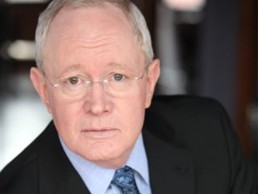
John Martin
After announcing his retirement following a 50-year career, in which he spent the last ten years working as Public Policy Consultant for the IALD, arc spoke with John Martin on his career highlights, and the increased profile of the lighting industry over the last decade.
How did you get into lighting?
I am not a lighting professional by training or experience. Starting in 2008, I served as a public policy consultant to the IALD. The skills required for that role included an appreciation of the importance of lighting design and an understanding of lighting technology, but it was actually better for me not to be a practicing lighting professional. That way, I did not bring my professional slant to any of the controversies or policy discussions in which the organisation was involved.
Can you give us a brief overview of your career to date?
Since I have just officially retired after 50+ years as a working professional, it’s difficult to be brief. The short list of my professions includes: teaching, legislative aide, education lobbyist, electrical contractor, corporate training director, and my work for IALD.
You were IALD’s Public Policy Consultant until the end of last year – what did this role involve?
As IALD’s Public Policy Consultant, I worked on several fronts to support lighting design and lighting designers. While the role evolved considerably over my tenure, the key elements remained constant: establish relationships with other organisations, work with governments and government officials at all levels, monitor governments for actions that could affect either lighting design or the business of lighting design, seek opportunities to raise awareness of the importance of lighting design, and communicate the impact of laws and regulatory proposals to IALD members.
How has the lighting industry changed and developed during your time with the IALD?
Three changes stand out over the past ten years: the rise of new technology (solid-state lighting); the consolidation and changing markets for manufacturers; and the growing public awareness of the impact of light and lighting on human health, productivity and comfort.
At IALD Enlighten Europe last November, you spoke of the ‘terrific progress’ made in raising awareness not only of the IALD but of lighting regulations around the world. How has the IALD been working to raise such awareness?
During the past ten years, the IALD has increased its visible involvement in policy issues in many ways: building relationships with other design- and construction-related organisations around the world, from the ILD and SLL to the IES in North America and Australia, Lighting Europe in the EU, as well as architectural societies, entertainment lighting associations such as PLASA or PEARLE and interior design associations; placing IALD volunteers on energy-code-writing groups wherever possible; and working with government officials in the EU, USA, Australia and elsewhere to raise the profile of the IALD and architectural lighting design in general. IALD’s ‘secret sauce’ has been our volunteers, members of the IALD who articulate the value of their profession, and who are able to analyse regulatory and legislative proposals to determine their impact on the practice of lighting design.
What will this increased awareness mean for the lighting industry as a whole? What impact has it had so far?
I hope that the increased awareness of lighting design helps the lighting industry become more visible (pardon the pun) to other design professions and to regulatory bodies. At the same time, we are entering a period in which light and lighting are more in the public consciousness than ever before; the combination of technological change (SSL) and increasing awareness of the importance of light in human health mean that lighting-related policy issues are no longer confined to energy efficiency, which has been the case for the past 40+ years. The growing issue of legal conflicts related to light pollution and the different ways in which these are tackled from a regulatory standpoint globally, is also showing the relevance of good lighting design. To date, the impact is that IALD has gained an official role as a “spokes-organisation” in places as diverse as Australia, the EU, and the U.S. State of California. In addition, IALD is playing a consulting role for organisations such as the International Well Building Institute (IWBI), authors of the WELL rating system.
Congratulations on your retirement! How do you plan on spending your retirement?
Professionally, I continue to be involved with the California Energy Alliance, an assembly of disparate organisations – from manufacturers to design professionals to labour unions – that are working together to improve California’s state-level energy regulation, which is widely seen as a leading indicator of how similar regulations will evolve in other U.S. States and at the national level. Personally, grandchildren and travel are already keeping me busy!
What would you say has been the highlight of your career to date?
I feel very privileged to have had the opportunity to work with IALD members from around the world over the past decade – they are uniformly interesting people, often insightful business owners, and imaginative thinkers. I have worked with IALD members from at least a dozen countries, which has itself been an education for me!
Finally, what do you think the future holds for the lighting industry?
Larger manufacturers will continue to consolidate and seek new revenue models, which in turn will put continuing pressure on independent lighting designers. In many arenas, “lighting as a service” will become a dominant business model. Smaller manufacturers and lighting designers may well make common cause to provide their own variations on the “lighting as a service” model. The policy importance of lighting in buildings will no longer be about the energy used for lighting. Increasing awareness of the power and importance of light may lead to an increasing demand for better lighting from building occupants and the public at large. The continuing debate will be, “Just what is ‘better lighting’?” As the cliché goes, ‘stay tuned for developments’!



